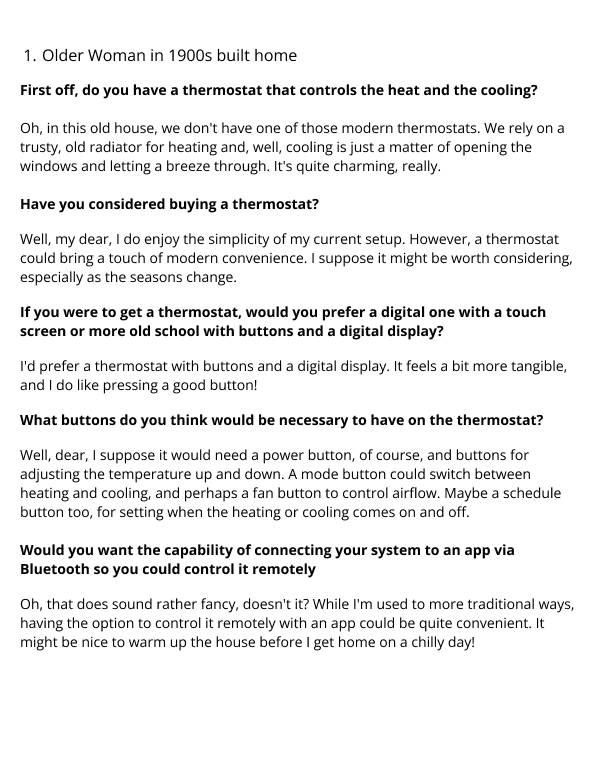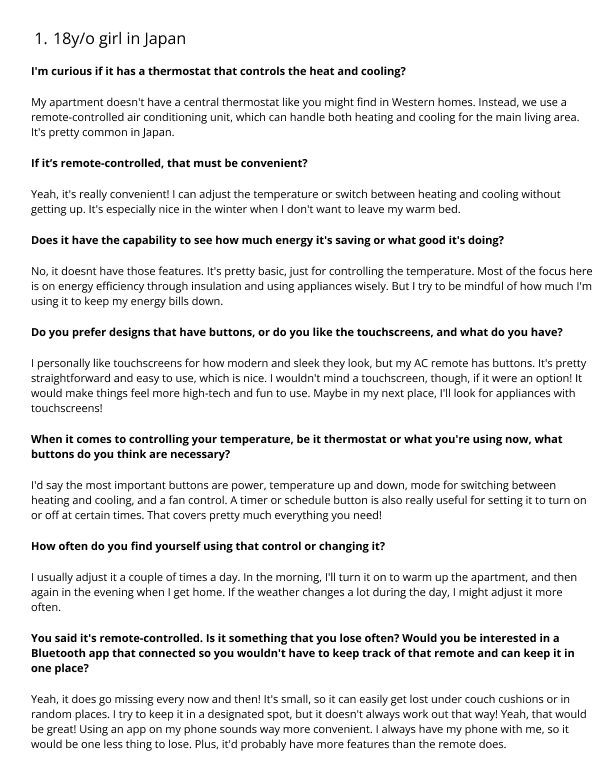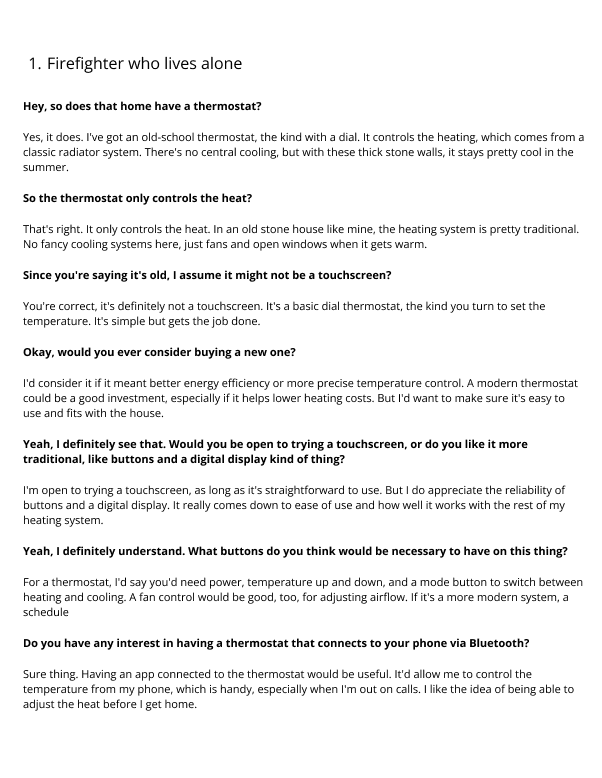I started the design process by brainstorming with my team to identify the core features and functions users expect from a thermostat. We mapped out strengths, weaknesses, and opportunities on a whiteboard, which helped us narrow down the most important design goals.
To gain deeper insights, I conducted interviews with a variety of users to understand their experiences, frustrations, and needs when it comes to thermostats. These conversations gave me a clearer picture of what works and what doesn’t. I also performed a competitive analysis, reviewing existing products to identify design gaps and areas for improvement.





Competitive Analysis
Using the insights I gathered, I created a user persona to ensure my design decisions stayed focused on the needs of the target audience. From there, I sketched initial concepts and refined them through feedback and iteration. My goal was to create a thermostat interface that balanced simplicity, functionality, and a modern aesthetic.
This project taught me the value of user research and how essential it is to approach design with the user’s perspective in mind. It also helped me strengthen my ability to communicate ideas and incorporate feedback into my process.





